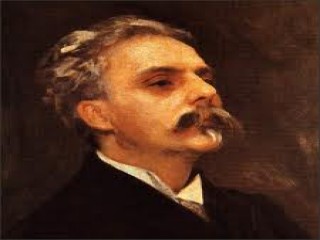
Gabriel Urbain Fauré biography
Date of birth : 1845-05-12
Date of death : 1924-11-04
Birthplace : Pamiers, France
Nationality : French
Category : Famous Figures
Last modified : 2011-05-27
Credited as : Composer, La Chanson d'Eve, Penelope (1913)
The French composer Gabriel Urbain Fauré is best known for his songs and his typically French exquisiteness of taste.
Gabriel Faure was born on May 12, 1845, in the provincial town of Pamiers, where his father was superintendent of schools. When Gabriel was 9, he was sent to Paris to attend the Ecole Niedermeyer, a school for the education of church musicians, where he had won a scholarship. Faure received a thorough grounding in organ playing and theory and became acquainted with Gregorian chant, whose modal melodies influenced his later compositions. Camille Saint-Saens, a teacher at the school, exerted a strong influence on the young provincial.
When Faure graduated in 1865, he accepted a position as organist in Rennes, but within a year he returned to Paris. He served as assistant organist at St-Sulpice and later at the Madeleine, Paris's most fashionable church, eventually becoming principal organist. He was professor of composition at the Paris Conservatory from 1896 until 1905 and director until 1920, when his growing deafness forced him to resign.
Faure was not a prolific composer, and with few exceptions he avoided the larger dramatic forms of opera and symphony. His compositions fall into three periods stylistically. Most of his songs were written during the first period, which ended in 1886. Their beautiful melodies and flowing accompaniments make the songs small masterpieces of the genre. Many of the piano pieces belong to this period. These nocturnes, barcarolles, and impromptus do not show off the performer's technique, but their subtle melodies, arpeggio accompaniments, and surprising harmonic progressions give them a special charm. Other early works are the Sonata No. 1 for violin and piano (1876) and the two Piano Quartets (1879 and 1886), which have an immediate charm and soaring lyricism.
Important works of Faure's second period, which lasted until 1908, are the song cycle La Bonne chanson (1892), settings of Paul Verlaine's poems, and the Requiem (1887). In contrast with the dramatic Requiems of most of his predecessors and contemporaries, Faure's is calm and resigned, a profound and moving meditation.
Works of the third period include two song cycles, La Chanson d'Eve (1910) and Le Jardin clos (1917); an austere opera, Penelope (1913); Sonata No. 2 for violin and piano (1917); Piano Quintet No. 2 (1921); and a Piano Trio (1924). These compositions, the works of a man in his 70s, are remarkable for their original harmonic progressions, serenity, and clarity. Faure died in Paris on Nov. 4, 1924.
















